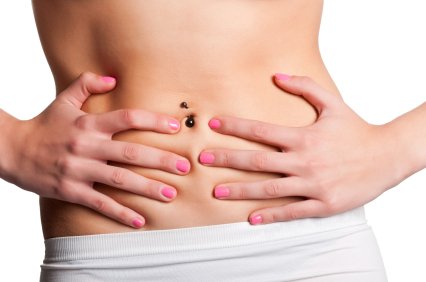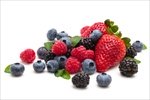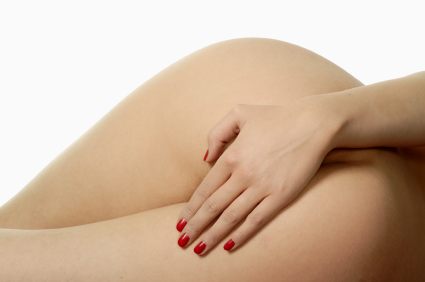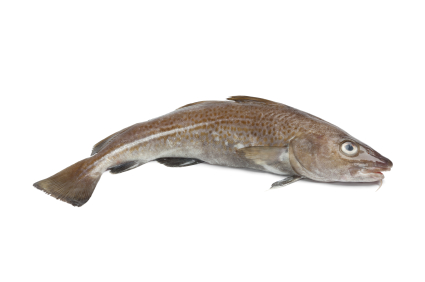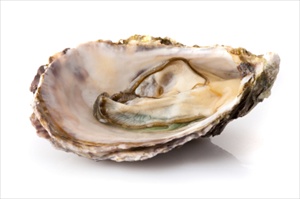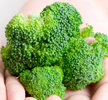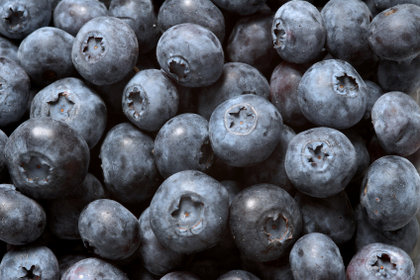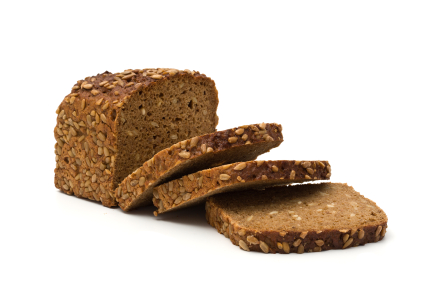Hemorrhoid Diet – The bottom line on nutritional strategies to avoid hemorrhoids
A hemorrhoid diet is not something I thought I would ever need, but I was 6 months pregnant and looked like a house.
After an afternoon long bicycle ride in my whale-like condition, I ended up with my first and worst case of hemorrhoids I or anyone had ever had (okay I imagined the last but my doc agreed; mine were doozies). I immediately started on a haemorrhoid diet. While my haemorrhoids didn't disappear until after I had my daughter, it made a difference and has helped avoid recurrence.
7 years later, I occasionally get a milder version of hemmorhoids I had after that fateful bike ride. When this occurs, I revert to my hemorrhoid diet, which improves symptoms in short order.
Bottom line on the Hemorrhoid Diet – What are hemorrhoids?
Hemorrhoids are swollen and inflamed blood vessels inside and outside the anus that can cause discomfort while sitting, standing or defecating.
In vulgar terms, hemorrhoids are similar to varicose veins around the pooper.
The vascular rich connective tissue in the anus becomes engorged and swollen. This is usually as a result of excess pressure in the abdominal or pelvic area on blood vessels near the anus.
Hemorrhoids aren't all bad. Like callouses on your foot from tight fitting shoes, they play a protective role to cushion the tissue in the colon and anus from damage caused by excess pressure.
Sometimes hemorrhoids remain inside the anus. Out of sigh, out of mind.
Other times, unfortunately, they protrude to form gruesome looking asteroid-like bumps around the anal opening. They can bleed profusely and create discomfort, including intense pain especially in the case of a thrombosed hemorrhoid. In addition, they can cause annoying itching and discomfort that results in part from difficulty keeping the rectal area clean of feces.
As anyone who’s had them will agree, hemorrhoids
are a colossal drag and that is an
understatement.
The Bottom Line on the Hemorrhoid Diet - How many people get them?
The number of adverts for hemorrhoid treatments including creams, unguents and medicated wipes designed to reduce swelling, itching and bacterial infection is a testament to the frequency and annoyance of hemorrhoids.
Experts estimate that 4.4% of the US population or 10 million people suffer from hemorrhoids. People may not necessarily be talking about their hemorrhoids but many are spending a good deal of money on the problem.
Interestingly, most of OTC hemorrhoid remedies available in pharmacies are designed to treat the symptoms of hemorrhoids and many of the products do that fine. Anti-inflammatories like ibuprofen reduce inflammation and pain; witch hazel wipes along with other astringents cleanse and kill bacteria; calendula and other creams can soothe.
The caveat is that most of these hemmaroid remedies do not prevent or eliminate hemorrhoids – they merely ameliorate or mask symptoms.
Prevention and eradication of hemorrhoids are where diet and lifestyle changes come in. The hemorrhoid diet can play a role in this.
Bottom line on the Hemorrhoid Diet – Are hemorrhoids dangerous?
While inconvenient, alarming (especially if they bleed), and unsightly, hemorrhoids generally are not dangerous unless they become infected.
Complications can include thrombosed or strangulated hemorrhoids, bacterial infection and skin fissures. Rarely does bleeding from hemorrhoids lead to anemia. However, the pain of a strangulated hemorrhoid can be intense – believe me! The little gaffers may become chronic, if you don’t make changes to your diet and lifestyle
Don’t self-diagnose suspected hemorrhoids or, for that matter, any bleeding, inflammation or swelling in the anal area. Get checked by a medical professional to eliminate more serious conditions like stomach, anal or colon cancer, diverticulitis, Chron’s and other intestinal problems.
Bottom line on the Hemorrhoid Diet – Traditional surgical and medical therapies for hemorrhoids
While hemorrhoids may eventually disappear or shrink over time, surgery is an option, especially in situations where the hemorrhoid is large, persistent or painful. Surgical techniques include cutting, freezing or strangling its blood supply via rubber band ligation. The latter has become the standard medical treatment for removing hemorrhoids.
Press here to read more about the current medical treatment for hemorrhoids in this 2011 Clinics in Colon Surgery article.
While surgery or ligation can be effective in certain situations, recurrence can be high, especially if you don’t eliminate or modify the factors that may have caused them in the first place.....This is where lifestyle and diet including following a hemorrhoid diet may help.
Diet and lifestyle factors indeed can be an effective tools to manage, if not prevent, the little buggers.
| The poop on healthy evacuation techniques? It’s not necessary to squat on your toilet seat or go to the expense of converting your current throne toilet into an Eastern squat toilet. No need for extreme measures. Simply ensure, when sitting on the seat, to keep your knees above your hips by placing your feet on low bench placed in front of the toilet. Make sure your children learn good toilet techniques to avoid future bowel and pelvic floor problems. |
Bottom line on the Hemorrhoid Diet – How Diet Can Make a Difference
As anthropologically-oriented researchers like Drs. Weston Price and Dennis Burkitt have pointed out, less developed cultures that consume a whole foods diet and adopt different evacuation techniques that avoid straining, hemorrhoids and other bowel conditions like constipation, diverticulitis, colon cancer etc. are virtually unknown. This suggests a change in diet and lifestyle may make a difference in preventing or healing hemorrhoids.
Bottom line on the Hemorrhoid Diet – What Lifestyle Factors Cause Hemorrhoids
1. Mechanical Causes for Hemorrhoids
Mechanical causes of hemorrhoids include any activity that puts sustained pressure on the tissue in the anal or pelvic floor area, and include
- straining to go (why constipation and poor evacuation techniques are thought to be major causes of hemorrhoids),
- pregnancy,
- carrying or lifting heavy loads (sounds like pregnancy) or
- sitting or standing for long periods including long distance-driving, working at a desk or, as in my case, bicycling, while the size of a house.
2. Dietary Contributors to Hemorrhoids
Hemorrhoids are associated with
- aging (think of all the grey hair in those hemorrhoids ads) when
connective tissue is less resilient;
- overweight and obesity.
This gets me to the dietary and lifestyle factors that contribute to hemorrhoids, which basically are the ones that contribute to poor vascular health – (i) inflammation and (ii) sub optimum nutrition.
Recall hemorrhoids are swollen (inflamed) blood vessels that don't function as they should. It is overall an inflammatory condition and diet and lifestyle can play a big role in avoiding this ugly contributor to bad health.
… And what contributes to poor vascular
health (as well as inflammation and sub-optimal nutrition) but poor blood sugar control which
occurs in the case of diabetes and insulin resistance. Once again, a deficit in
anti-inflammatory foods, combined with an over-consumption of inflammatory
foods, contribute to unhealthy blood vessel function throughout the body... including the bottom!
It’s no surprise that the following would, therefore, be the case:
- A diet high in refined carbohydrates, low in fiber and depleted of whole grains and fresh fruit and veg can contribute to inflammation and hemorrhoids.
- A lack of nutrients that support healthy vascular function can increase your risk for as well as severity of hemorrhoids.
Bottom line on the Hemorrhoid Diet: What dietary factors can increase your hemorrhoid risk?
From a dietary perspective alone, several factors increase one’s risk of hemorrhoids
- A low fiber diet
- A diet high in refined carbs and animal products.
- A diet low in essential fats especially Omega 3 fats.
- A diet low in micro minerals including zinc and chromium.
- High alcohol intake
- Obesity or overweight.
As you can see this is basically all the risk factors for inflammation, whether that plays out in your body as cardiovascular disease, osteoarthritis, or diabetes or … as the case may be, hemorrhoids. This is especially the case when certain other risk factors are added to the mix, like constipation, pregnancy or sitting at a desk for long hours.
Bottom line on the Hemorrhoid Diet: The goals of dietary intervention when it comes to hemorrhoids?
The goal of an effective hemorrhoid diet to reduce the risk of getting hemorrhoids and eliminating them once you do is the following:
- Reduce constipation and soften stool by
consuming enough fiber and water. See Foods for Constipation and Constipation Remedies for details.
- Strengthen and fortify vascular and connective tissue in the anal area (and elsewhere) by following an anti-inflammatory diet described here. See Anti-inflammatory Diets for for additional details.
- Implement lifestyle measures to avoid hemorrhoids including good bowel function, exercise and healthy evacuation postures (I know I’ve got your attention now).
Bottom line on the Hemorrhoid Diet: Reducing constipation and softening stool
- Consume high fiber foods as part of your hemorrhoid diet: Constipation and impacted feces are
linked to a higher incidence of hemorrhoids because of increased abdominal and colonic pressure during the elimination process. A diet high in fruits and
vegetables and whole grains including a good dose of raw fruits and veg on a
daily basis is the number one tip here. Fiber supplements also may help.
- Get Enough Water as part of a hemorrhoid diet: Water is key for fiber to function as an antidote to constipation.
- Avoid a diet high in refined carbs as
part of your hemorrhoid diet: A diet high in refined
carbs has much or all of the fiber removed or destroyed along with micronutrients like zinc and chromium needed for vascular health. A diet
high in animal foods can be low in fiber, because animal foods lack
fiber. As well, an excess of refined foods, including added sugars as in sodas
and baked goods are fiber and nutrient depleted as well as inflammatory.
- Limit saturated fats dominant in animal foods and
avoid too many Omega 6 rich foods– Too much saturated
fat found predominately in animal foods like meat and dairy as well as a high ratio of Omega 6 to Omega 3 fats
can lead to inflammation.
For extensive tips on constipation including implementing a high fiber diet, water intake and avoiding constipating foods check out the pages Remedies for Constipation as well as Foods for Constipation.
Bottom line on the Hemorrhoid Diet: Foods and Supplements to Avoid or Resolve Hemorrhoids by strengthening and maintaining healthy blood vessels
- Omega 3 oils – Increase your Omega 3 fat intake is important for
healthy skin and mucous membrane as well as lowering your Omega 6 to Omega 3 ratio.
Our modern diet often leaves us Omega 3 deficient as well, via an
overabundance of inflammation causing Omega
6 oils compared to Omega 3's, with the anti-inflammatory effect of our Omega 3's impaired. Omega 3 fats have an
important anti-inflammatory function that is extremely useful when it comes to
a condition like hemorrhoids. Omega 3s
are abundant in cold water fish and their oils but also in certain seeds and
their oils including flax and chia seeds. Press here for more details about the Benefits of Omega
3s as part of your Hemorrhoid Diet.
| Flax Seeds to Combat hemorrhoids - Flax seeds are high in Omega 3 oils and are a good way to soften stool to avoid constipation and the pain of hemorrhoids. Soak 125 ml/1/4 cup of seed overnight in a glass of water and drink the gel like concoction the next day for an effective anti –inflammatory constipation remedy. This is an ideal to fight hemorrhoids. To get the maximum Omega 3s from your seeds use the cold pressed flax oil on salads or vegetables or grind and sprinkle raw seeds on soups and salads. |
- Vitamin C – is needed to form and maintain tissue matrix including healthy blood vessels. Recall that the primary symptoms of the iconic Vitamin C deficiency disease, scurvy, are leaky blood vessels. While scurvy is rare today, Vitamin C levels are routinely reduced by stress, too much junk or processed foods and too much alcohol – Mmn, sounds like the modern diet! Ensure you get enough Vitamin C via your food or supplements to strengthen and maintain healthy blood vessels including those in the backside. Luckily, Vitamin C rich fruits and vegetables are great for constipation as well . Press here for more on the benefits and need for Vitamin C.
- Vitamin E – is a fat soluble vitamin important for healthy cell membrane as well as the prevention of inflammation and especially healing inflamed tissue, important when trying to shrink hemorrhoids. Nuts and seeds are vitamin E rich.
- Magnesium is often deficient in the modern diet but is key for good vascular tone and integrity as well as nerve and muscle function, including peristaltic action of the colon that propels feces towards the anus and enable defecation. Make sure you get enough magnesium rich food in your diet (including dark leafy greens). Supplement if necessary. Press here for more on the benefits of magnesium and how to include enough in your diet or via supplements.
- Zinc– This is an important micro minerals often deficient in our western diet because it is removed in the refining process. Getting enough is important in any anti-inflammatory diet including the hemmaroid diet. Press here for more on the benefits of zinc to see how you can get enough zinc via diet and/or supplements.
For more about reducing inflammation via diet, key when it comes to avoiding hemorrhoids, check out the page on anti-inflammatory diets as well as inflammatory foods.
Bottom line on the Hemorrhoid Diet: Other supportive lifestyle strategies to prevent hemorrhoids
While prevention is better than cure, these lifestyle strategies can both help avoid hemorrhoids and reduce recurrence.
1. Use proper defecation techniques (Have I now piqued your interest?) - Squatting or Eastern toilets beat our Western style “throne” toilets” by a long shot. While this is not an option for most of us, one easy strategy to avoid straining is, when seated on the toilet, rest your feet on a stool (no pun intended) or telephone book. The key is that your bent knees remain higher than your hips. This posture promotes easier elimination and helps avoid strain or pressure in the anal area, one of the key contributors to hemorrhoids in the first place.
2. Exercise and avoid prolonged standing and activities that put pressure on your backside – Aside from my overly ambitious bicycling efforts while pregnant, physical activity that maintains toned abdominal and pelvic floor muscles are great choices to avoid hemorrhoids. Kegel exercises that maintain your pelvic floor can help. Avoid standing or sitting for long periods or doing any activity that puts prolonged pressure on the backside.
3. Avoid or reduce stress – Stress is a risk factor for hemorrhoids as well as, for that matter, constipation and inflammation. Stress releases hormones that on a chronic basis can inhibit bowel action as well as contribute to inflammation. Magnesium rich foods can have a calming effect on muscles. Train muscles to relax, instead of tense in stressful situations and eat only when calm and in a relaxed environment.
4. Chew
food slowly and well to aid digestion and nutrient absorption - This is underrated
advice, especially in our fast paced lives when eating on the run,
socializing, working on the computer or talking on the phone are the norm…. Your diet is
only as good as what your body absorbs. Chewing is the first stage of adequate
digestion. You skip it at your peril.
| What are Kegels? Exercises to strengthen the pelvic floor muscles. Most woman learn these exercises during pregnancy, which can put inordinate strain on the pelvic floor and lead to incontinence, prolapse etc. The pelvic floor muscles support the bladder, uterus and other abdominal organs and men have them too, ex the uterus. |
Effective Natural Treatments to Deal with Hemorrhoid Symptoms
Herbal and botanical lotions and creams can provide antibacterial effect and comfort for inflamed tissue. Look for wipes that contain the astringent witch hazel for cleansing and creams and lotions containing calendula and lavender for soothing.
Boswellia and Curcumin (the active ingredient in the Indian spice Tumeric) can help alleviate hemorrhoid pain.
For more background on effective hemorrhoid diets and other healthy diets, check out the following pages on this site...
|
Vitamin D Foods |
Zinc |
Magnesium |
Calcium |
Vitamin C |
|
Anti-inflammatory |
Cancer & Nutrition |
Cancer Prevention |
Anti-oxidants |
Chromium |
Press here to read more on Constipation Remedies.
Press here for specifics on Foods for Constipation.
Press here to learn about Anti-inflammatory Diets.
Check out Inflammatory Foods to avoid.
To learn more about nutrients that can prevent and resolve hemorrhoids and inflammatory conditions or build strong tissue matrix, press on the Benefits fo Vitamin C.
Press here to learn more about the Benefits of Omega 3s:
Press here to read about the Benefits of Magnesium.
For more on all powerful Zinc.
For timely news on research and info about health and nutrition, press on Healthy Diet Blog.
To return to Healthy-Diet-Healthy-You, press on home.

